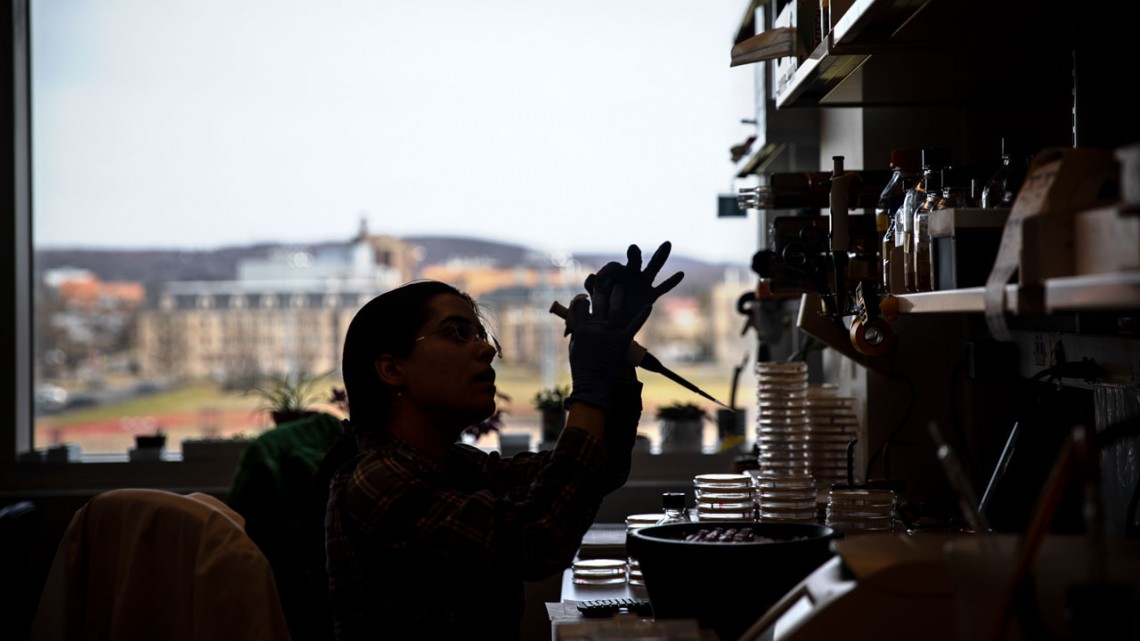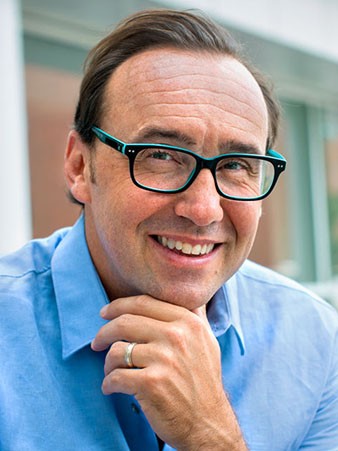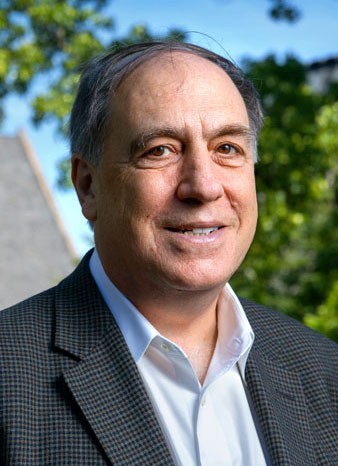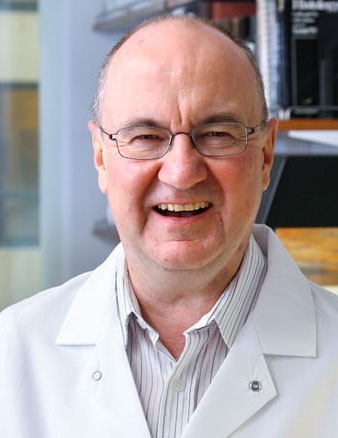
Three recent cross-campus collaborations sparked by efforts from the Office of Academic Integration have received a total of $33 million in federal grants to solve problems at the root of human disease.
Academic Integration efforts lead to $33M in grants
By Krishna Ramanujan
Cedric Feschotte, professor of molecular biology and genetics in the College of Agriculture and Life Sciences, studies endogenous retroviruses – bits of viral DNA, originating from ancient infections, that have become incorporated in the human genome.
Thanks to a seed grant from Cornell’s Office of Academic Integration, Feschotte has teamed up with Douglas Nixon, professor of immunology in medicine in the Division of Infectious Diseases at Weill Cornell Medicine, a scientist with whom he shared a mutual appreciation but had never met. Now, the pair have formed an interdisciplinary team that received a $6 million grant to investigate how retroviruses and HIV interact to promote B cell lymphomas.
“The seed grant brought us together,” Feschotte said. “Without it, I would never have worked on lymphoma and in patients infected with HIV. Honestly, this was not in my wheelhouse.”
Bringing researchers together – not only across disciplines but across the 200-plus miles separating Ithaca from New York City – is the aim of academic integration, which promotes, builds and enhances collaborative research across Cornell’s campuses. The lymphoma project is among three of the most recent cross-campus collaborations sparked by efforts from the Office of Academic Integration. These grants, alone, have gone on to receive a total of $33 million in federal grants to solve problems at the root of human disease.
The Academic Integration initiative, led by the vision of Vice Provost Gary Koretzky, wields a number of tools for helping researchers from the more fundamental-research oriented Ithaca campus share expertise with more applied, clinical faculty at the medical college.
While the COVID-19 pandemic added an unforeseen barrier to such collaborations, the Office of Academic Integration and researchers still found ways to be successful.
An Academic Integration Multi-Investigator Seed Grant program provided initial funds for researchers to meet, shape their projects and gather preliminary data. Thematic symposia, of which there have been 10 since the office’s inception, have created opportunities for researchers to learn about work on sister campuses, and include formats that encourage initial networking to turn into tangible projects.
“It’s a challenge to overcome the distance and cultural differences that investigators have in terms of how they do work on the two campuses,” Koretzky said. “What we’ve discovered is that when they do come together, they find much more commonality than they expected. But more important than commonality is complementarity, so that they actually are stronger, because they are working together.”
Retroviruses, HIV, Epstein Barr Virus and B cell lymphoma, $6 million, five-year grant from the National Cancer Institute
Researchers: Douglas Nixon (contact PI); Cedric Feschotte; Ethel Cesarman, professor of pathology and laboratory medicine and an expert on herpes viruses at Weill Cornell Medicine; and Fabio Leal, a researcher at the Brazilian National Cancer Institute, who will provide samples from lymphoma patients, with and without HIV.
People living with HIV have higher incidences of B cell lymphomas compared with the general population. Similarly, there is evidence that Epstein Barr Virus also promotes these lymphomas.
Endogenous retroviruses, which make up around 8% of the human genome, may answer this riddle. Researchers believe these viruses infected germ (egg and sperm) cells millions of years ago, were passed from mother to child, and over time their genetic sequences became incorporated in the human genome. Research shows that retroviral sequences may be involved in the development of cancers.
The team will explore how HIV and Epstein Barr Virus interact with retroviral sequences inside our genome. They will test whether HIV infections may activate ancient viral elements, creating feedback loops that promote inflammation that indirectly lead to lymphoma.
Also, HIV infections may activate genes that originate in retroviral elements, prompting them to express signaling proteins, which create cross-talk between cells and may disrupt regulation of B cells and promote B-cell lymphoma. The work may provide a new source of antigenic targets for immune T-cells or antibodies that could lead to lymphoma therapies.
A $75,000 Academic Integration Multi Investigator Seed Grant in 2019 to Nixon and Feschotte led to preliminary data, but perhaps more importantly created a purpose and funds for the researchers and their teams members to travel between Ithaca and New York City during the pandemic.
“Without the seed grant, we probably wouldn’t have gotten this [National Cancer Institute] grant,” Nixon said. “The person-to-person meetings and getting the younger people in our labs lab to know each other and start to collaborate has set up a long-term future of more collaborative programs.”
The seed grant began as a different study related to retroviruses and HIV latency in cells, which contributed to a separate collaboration and a recent multi-institution National Institutes of Health award for $26.5 million, including $5.7 million for Cornell. The project will be led by reseachers at Gladstone Institutes, Scripps Research and Weill Cornell Medicine.Lishomwa Ndhlovu, professor of immunology in medicine at Weill Cornell Medicine is a PI, and Nixon and Feschotte are both co-investigators.
The nuts and bolts of copying DNA, $12 million, five-year grant from the National Institute of General Medical Science
Researchers: John Lis, professor of molecular biology and genetics in the College of Agriculture and Life Sciences (lead PI); Steven Josefowicz, assistant professor of pathology and laboratory medicine at Weill Cornell Medicine; Effie Apostolou, associate professor of molecular biology in medicine at Weill Cornell Medicine; Haiyuan Yu, professor of biological statistics and computational biology in CALS; and Abdullah Ozer, a research associate in Lis’ lab.
A better, more complete understanding of the transcription cycle – where DNA is copied into RNA, which is translated into proteins – and its regulation could lead to new targets for therapies for cancer, neurological and developmental disorders, autoimmune, metabolic and cardiovascular diseases related to misregulation of transcription.
The team will use a bevy of state-of-the-art technologies to investigate large macromolecular complexes involved in transcription and its regulation. They developed an RNA aptamer – RNA selected to tightly bind to a green fluorescent protein – for tagging large complexes. The group will focus initially on RNA Polymerase II, the main machine that transcribes mRNA encoding genes.
“We want to tag a subunit of the polymerase as one of the macromolecular complexes we’re interested in and be able to then track it as it moves through its various regulated steps in the transcription cycle,” Lis said.
In this way, the researchers can detect complexes and their associated protein partners and potential regulators.
A special mass spectrometry machine will allow them to dissect the composition of a complex at various stages of the cycle; a cryo-electron microscope will provide a high-resolution structure of a complex; cross-linking reagents will capture proteins loosely associated in the cycle; and new software will aid analysis.
The team expertise will allow them to study native complexes during transcription, “so we can see it as it really is in the cell,” Josefowicz said.
Lis and colleagues received a $100,000 academic integration seed grant in late 2019.
Also, the project teamed senior researchers like Lis with junior faculty, such as Josefowicz, who face challenges of setting up a lab from scratch and maximizing the potential reach of their nascent research programs.
“John’s a giant in this field,” Josefowicz said. “These kinds of collaborations are so fulfilling for junior faculty like me, who can learn from him rather than having to reinvent the wheel. It means having so much more fun and getting to work with other passionate scientists.”
Uncovering how tuberculosis transmits, $15.5 million, five-year grant from National Institutes of Health
Researchers: Kyu Rhee, associate professor of medicine and of microbiology and immunology at Weill Cornell Medicine (lead PI); Andrew Clark, professor of population genetics in the College of Arts and Sciences; Carl Nathan, chair of the Department of Microbiology and Immunology at Weill Cornell Medicine; Daniel Fitzgerald, director of the Center for Global Health at Weill Cornell Medicine; and Martin Wells, professor of statistical sciences in the School of Industrial and Labor Relations.
This team will investigate the biology of how the tuberculosis bacteria survives and transmits infection through the air.
Prior to the arrival of COVID-19, tuberculosis (Tb) ranked as the leading cause of death from an infectious disease. Unlike COVID, Tb only transmits naturally to humans from other humans, and its transmission has not been studied in other hosts. It can remain silent in people for years before causing disease, limiting the effectiveness of existing methods to track and treat disease. Also, acquiring the disease doesn’t protect against reinfection. By learning more about the biology of transmission, the team hopes to identify candidate molecules for developing vaccines or drug targets that could reduce Tb’s infectiousness.
The researchers will use an array of state-of-the art technologies to identify and study specific factors that enable Tb to successfully launch, fly and land from one host to the next. In Ithaca, Clark and Wells will analyze genome sequences of Tb variants from samples from Haiti and Moldova. As with COVID, the researchers plan to create a branching diagram, called a phylogenetic tree, that reveals the bacteria’s evolution and relationships between strains, showing how a descendant’s success is based on its increased transmissibility.
“A change in transmission is going to be informative about the biology,” Clark said. “It’ll tell us what mutations matter.”
Rhee said the academic integration office’s biannual symposia provided him with a survey of current thinking in related fields and exposed him to new opportunities for innovation and collaboration.
“The Academic Integration initiative is really quite special, if not powerful,” for bringing together the fundamental sciences at Ithaca and the clinical sciences at the medical college, Rhee said. “For things where you’re forging new ground and creating new fields, that interaction is really critical.”
Media Contact
Get Cornell news delivered right to your inbox.
Subscribe



